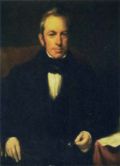File:Prodromus Novae Hollandeae.djvu

Original file (1,812 × 2,753 pixels, file size: 21.76 MB, MIME type: image/vnd.djvu, 464 pages)
Captions
Captions
Summary
[edit]| Prodromus florae Novae Hollandiae et insulae Van-Diemen, exhibens characteres plantarum quas annis 1802?1805
|
||||||||||||||||||||||
|---|---|---|---|---|---|---|---|---|---|---|---|---|---|---|---|---|---|---|---|---|---|---|
| Author |
author QS:P50,Q155764 |
|||||||||||||||||||||
| Title |
Prodromus florae Novae Hollandiae et insulae Van-Diemen, exhibens characteres plantarum quas annis 1802?1805 |
|||||||||||||||||||||
| Publisher |
Londini : typis R. Taylor et socii, |
|||||||||||||||||||||
| Language | Latin | |||||||||||||||||||||
| Source | Internet Archive identifier: mobot31753003393979 | |||||||||||||||||||||

|
This file is in DjVu, a computer file format designed primarily to store scanned documents.
You may view this DjVu file here online. If the document is multi-page you may use the controls on the right of the image to change pages. You may also view this DjVu file in your web browser with a browser plugin/add-on, or use a desktop DjVu viewer for your operating system. You can choose suitable software from this list. See Help:DjVu for more information.অসমীয়া ∙ català ∙ čeština ∙ Deutsch ∙ Deutsch (Sie-Form) ∙ English ∙ Esperanto ∙ español ∙ français ∙ galego ∙ magyar ∙ italiano ∙ 日本語 ∙ македонски ∙ Nederlands ∙ polski ∙ português ∙ русский ∙ sicilianu ∙ українська ∙ 简体中文 ∙ 繁體中文 ∙ +/− |
Licensing
[edit]This image is in the public domain because it is a mere mechanical scan or photocopy of a public domain original, or – from the available evidence – is so similar to such a scan or photocopy that no copyright protection can be expected to arise. The original itself is in the public domain for the following reason:
This tag is designed for use where there may be a need to assert that any enhancements (eg brightness, contrast, colour-matching, sharpening) are in themselves insufficiently creative to generate a new copyright. It can be used where it is unknown whether any enhancements have been made, as well as when the enhancements are clear but insufficient. For known raw unenhanced scans you can use an appropriate {{PD-old}} tag instead. For usage, see Commons:When to use the PD-scan tag. | |||||
File history
Click on a date/time to view the file as it appeared at that time.
| Date/Time | Thumbnail | Dimensions | User | Comment | |
|---|---|---|---|---|---|
| current | 07:37, 29 June 2018 |  | 1,812 × 2,753, 464 pages (21.76 MB) | Samwilson (talk | contribs) | Importation from Internet Archive via IA-upload |
You cannot overwrite this file.
File usage on Commons
The following page uses this file:
File usage on other wikis
The following other wikis use this file:



